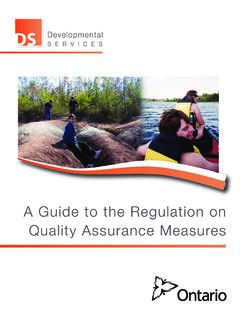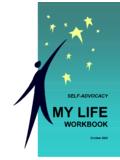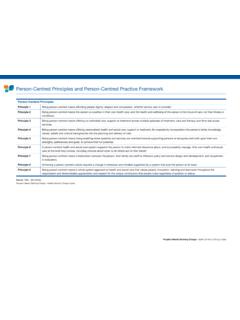Transcription of PERSON-CENTERED PLANNING APPROACHES
1 1 PPPEEERRRSSSOOONNN---CCCEEENNNTTTEEERRRE EEDDD PPPLLLAAANNNNNNIIINNNGGG AAAPPPPPPRRROOOAAACCCHHHEEESSS AAAAAAAAAAAA LLLLLLLLLLLLIIIIIIIIIIIITTTTTTTTTTTTEEEE EEEEEEEERRRRRRRRRRRRAAAAAAAAAAAATTTTTTTT TTTTUUUUUUUUUUUURRRRRRRRRRRREEEEEEEEEEEE RRRRRRRRRRRREEEEEEEEEEEEVVVVVVVVVVVVIIII IIIIIIIIEEEEEEEEEEEEWWWWWWWWWWWW prepared for persons with Developmental Disabilities Central Alberta Community Board Project Manager: Project Manager: Project Manager: Project Manager: Christine BeckerChristine BeckerChristine BeckerChristine Becker Private Researcher: Private Researcher: Private Researcher: Private Researcher: Robert PallinRobert PallinRobert PallinRobert Pallin May, 2001 May, 2001 May, 2001 May, 2001 2 TABLE OF CONTENTS I Defining PERSON-CENTERED PLANNING .
2 4 II Roots of PERSON-CENTERED PLANNING .. 5 III APPROACHES to PERSON-CENTERED PLANNING 1. Normalization / Social Role Valorization .. 6 2. Essential Lifestyle PLANNING .. 8 3. PATH ( PLANNING Alternative Tomorrows with Hope) .. 9 4. MAPS (McGill Action PLANNING System) .. 10 5. Personal Futures PLANNING .. 11 6. Individual Service Design .. 12 7. Circles of Support .. 12 8. Lifestyle Development Process .. 13 IV Monitoring and Evaluation .. 14 V References .. 17 VI Library Materials.
3 21 3 Acknowledgments There are many people who volunteered their assistance to this project, and I sincerely appreciate their contributions. A warm thank-you is extended to: Susan Matsumoto at the Canadian Red Cross in Calgary for offering her expertise of PERSON-CENTERED PLANNING in the form of contacts and sources of information. Bob McGowan, librarian at the Vocational and Rehabilitation Research Institute (VRRI) in Calgary. Bob was a mind-reader it seemed. He had fantastic sources of information for me when I visited VRRI.
4 Cheryl Crocker, , , Grant McEwan College in Edmonton. Cheryl teaches a course on PERSON-CENTERED PLANNING , and linked me to valuable sources of information. Her textbooks A Little Book about PERSON-CENTERED PLANNING and the MAPS workbook were available at the Grant McEwan library and they were key sources for this project. Jack Pearpoint, Centre for Integrated Education and Community in Toronto. Jack replied with haste to my email inquiries for information, even when he was experiencing long days with no breaks in the United Kingdom doing workshops.
5 Also, a big thank-you goes to Jack for his permission to use images from the Inclusion Press Website. Sean Parsons, Web Designer, Community Information & Referral Society, Red Deer. Sean did a tremendous amount of technical work with this project, and all of it is so much appreciated! Christine Becker, Community Resource Manager, persons with Developmental Disabilities: Central Alberta Community Board. Thank you so much for your patience as I made my best attempt to become an expert in the area of PERSON-CENTERED PLANNING .
6 4 Defining PERSON-CENTERED PLANNING As defined by O Brien and Lovett (1992), PERSON-CENTERED PLANNING refers to a group of APPROACHES to organizing and guiding community change in alliance with people with disabilities and their families and friends . There are many APPROACHES with many names that exist, but to qualify as PERSON-CENTERED they should share certain characteristics. A typical PERSON-CENTERED plan should include these steps in one form or another (Steere et al., 1995; McManus & Mount, 2000): Getting to know the person with the disability.
7 Assembling a team to develop a comprehensive personal profile of the individual, known as the focus person . A clear, unrestricted vision of success is developed by the team, which guides the rest of the process. This vision involves the person s talents and dreams, and includes new roles he or she can fill in society. Perhaps the best way to describe PERSON-CENTERED PLANNING is by comparing it to traditional methods of PLANNING . Traditional PLANNING is often controlled by an interdisciplinary team that determines what is best for the individual, often without consultation with family or those who may know the individual best.
8 The team may involve a psychologist, a social worker, an occupational therapist, teachers, a psychiatrist, and vocational specialists. If parents are invited, often they do not wish to attend meetings under these circumstances. PLANNING often begins through an assessment, which is used to uncover what the person needs, and what their problems or disabilities are. The individual may be determined to be violent or have a low IQ. A plan may involve filling openings in group homes, or wherever openings may be.
9 The individual with the disability is expected to change to fit the program. Usually meetings occur in professional settings. The attitude tends to be that society is not ready to accept the individual into the community, and that the individual requires segregation and protection ( , group homes). In contrast, PERSON-CENTERED PLANNING usually begins by getting to know the person. This involves meetings or visits outside of the professional setting, such as at a home setting. It is assumed that parents, or those closest to the focus person know this person best.
10 A network or circle of people is established who know and have a vested interested in the individual. This network is intervisionary, as opposed to interdisciplinary, and may include family, friends, peers and clergy. The focus person and parents control the PLANNING process. Coordination is achieved by a facilitator who makes records, utilizes graphics, and who works to establish and promote the vision. The external facilitator also helps to ensure that the focus person s role is being met in the process.






